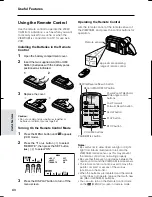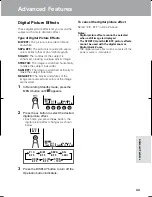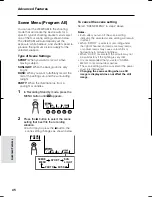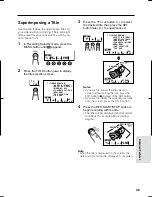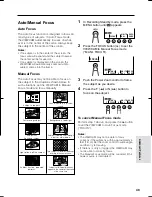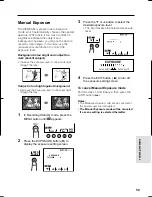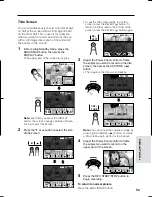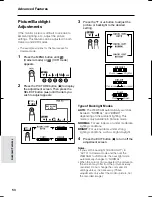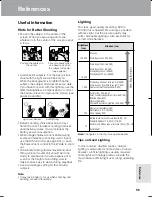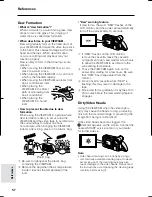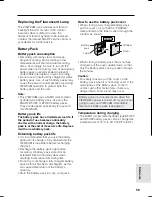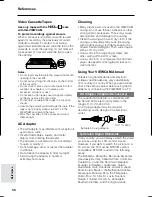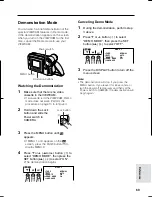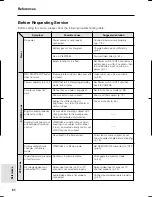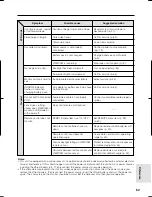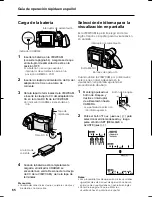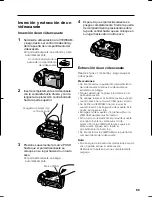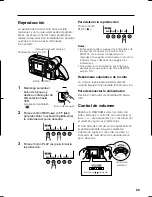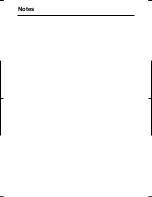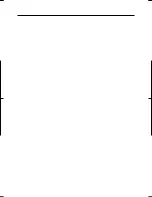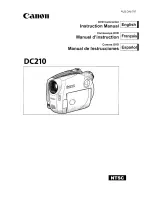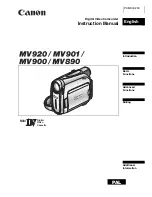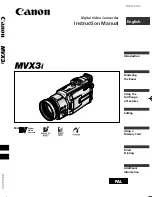
V L - A H 1 5 0 U / p p . 0 5 6 - 0 6 3 ; 0 0 / 11 / 2 1 / 1 8 : 0 0
G. K . A s s o c i a t e s , To k y o
56
References
Lighting
For clear, good-quality recording, 500 to
100,000 lux is needed. Recording is possible
with less light, but the picture quality may
suffer. Adequate lighting is also essential for
correct white balance.
Useful Information
Hints for Better Shooting
• Position the subject in the center of the
screen. When you are using auto focus,
whatever is in the center of the screen is kept
in focus.
References
Position the subject in
the center.
Focus manually when
you need to position
the subject off center
(see page 48).
Note:
The figures in the chart are approximations.
Situation (Lux)
Blue sky
Clear day at noon (100,000)
Clear day at 10 am (65,000)
Clear day at 3 pm (35,000)
Cloudy day at noon (32,000)
Cloudy day at 10 am (25,000)
Cloudy day, one hour after sunrise (2,000)
Clear day, one hour before sunset (1,000)
Fluorescent light near window (1,000)
Factory floor (700–800)
Sales counter in department store (500–700)
Bowling alley (500)
Library (400–500)
Office with fluorescent lighting (400–500)
Fluorescent desk lamp (400)
Flashlight at 3 ft (1 m) (250)
Shop stairway (100)
During intermission at movie theater (15–35)
Cigarette lighter at 1 ft (30 cm) (15–20)
Candles on birthday cake at 8 inches (20 cm) (10–15)
Candlelight
○
○
○
○
○
○
○
○
○
○
○
○
○
○
○
○
○
○
○
○
○
○
○
○
○
○
○
○
○
○
○
○
○
○
○
○
○
○
○
○
○
○
○
○
○
○
○
○
○
○
○
○
○
○
○
○
○
○
○
○
○
○
○
○
○
○
○
○
○
○
○
○
○
○
○
○
○
○
Brightness
(Lux)
100,000
10,000
1,000
100
10
○
○
○
○
○
○
○
○
○
○
○
○
○
○
○
○
○
Optimal lighting range
• Avoid backlit subjects. For the best picture,
shoot with the light source behind you.
When the background is brighter than the
subject, the subject often becomes too dark.
If you have to record with this lighting, use the
Gamma Brightness Compensation or correct
the exposure level to improve the picture (see
pages 34 and 50).
Light from behind
Backlighting
• Before zooming, think about how to best
frame the shot. Frequent zooming produces
unattractive pictures. It also increases the
battery power consumption.
• When image shakes are noticeable during
zoomed-in telephoto shooting, use a tripod,
use the DIS function (see page 30), or push
the Power Zoom control to the W side to zoom
out.
• Horizontal panning (lateral movement) and
tilting (vertical movement) should be done
slowly to emphasize the wide expanse of a
scene or the height of a building, and to
make scenes easy to watch during playback.
• Use a wide-angle setting for fast-moving
subjects.
Note:
• It may take longer to focus when zooming and
panning are used frequently.
Tips on Good Lighting
I
n most outdoor, daytime scenes, natural
lighting is adequate for home videos. Indoors,
however, artificial lighting is usually required.
Video lights with halogen lamps provide the
most natural artificial light over a long operating
life.


